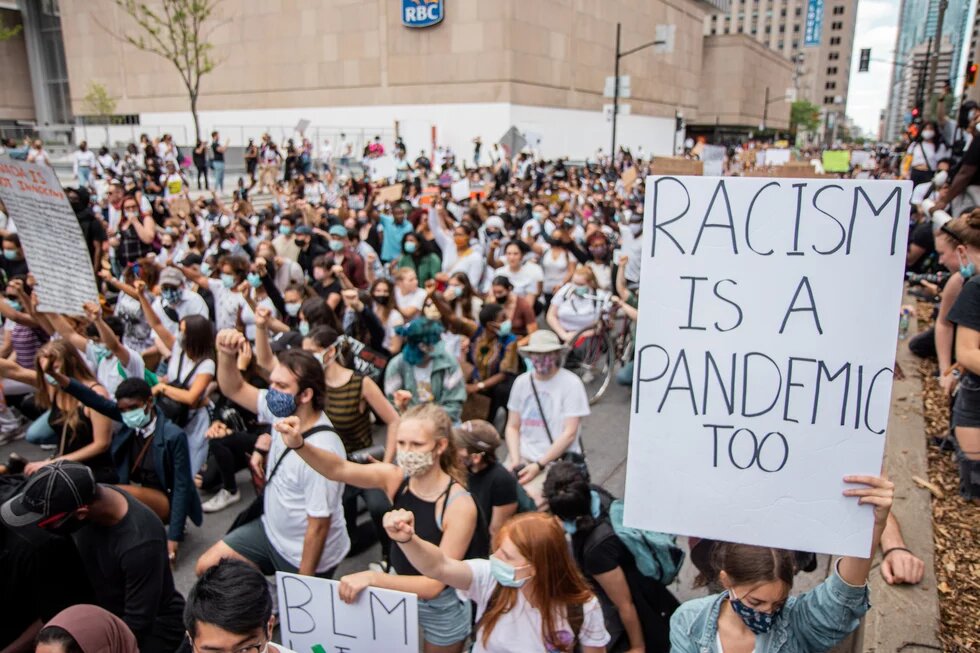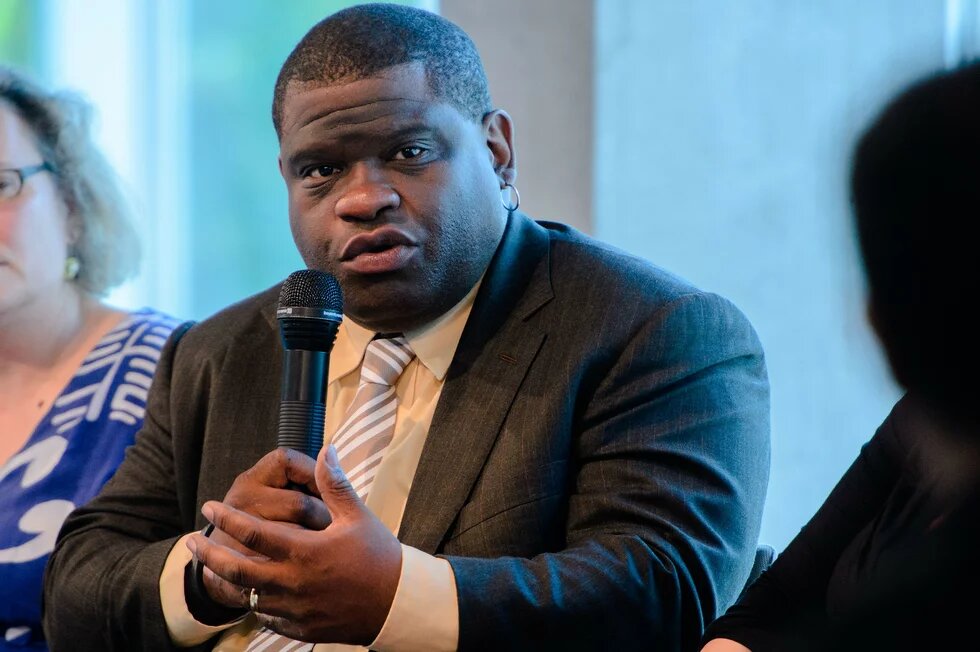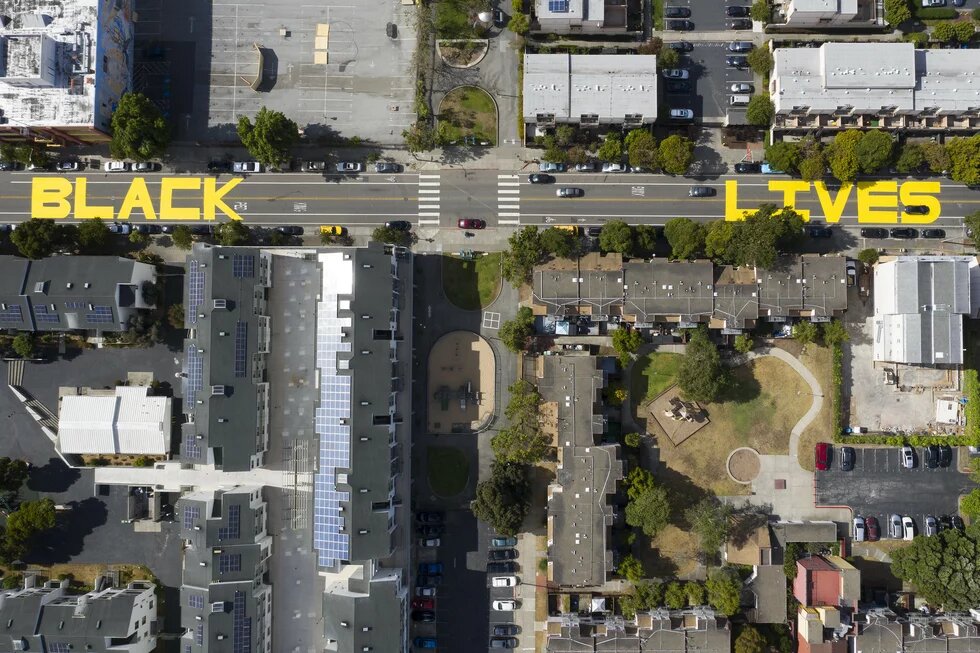
The murder of George Floyd amidst of a global pandemic has triggered a global conversation among the Black diaspora and its progressive allies. In the editorial for our #BlackLivesMatter focus, award-winning journalist Gary Younge analyses the current debates in the U.S. and in Europe.

As Muhammad Ali prepared to take on George Foreman in Kinshasha in 1974 the Zairean musician Malick Bowens was reflecting on what the American boxer’s importance to the developing world. "We knew Muhammad Ali as a boxer, but more importantly for his political stance," he says in the film When We Were Kings. "When we saw that America was at war with a third world country in Vietnam, and one of the children of the U.S. said, 'Me? You want me to fight against Vietcong?' It was extraordinary that in America someone could have taken such a position at that time. He may have lost his title. He may have lost millions of dollars. But that's where he gained the esteem of millions of Africans.”
There was a period, from the mid-fifities to the late sixties, when the demands of Black America chimed with those of the broader Black diaspora and beyond – People of Colour across the globe were fighting for full citizenship and the right to vote. Shortly after Kwame Nkrumah was elected the leader of a newly-independent Ghana, he invited Black American intellectual W.E.B. Du Bois to edit an Encylcopedia Africana and Paul Robeson to assume the chair of music and drama at Accra University.
“History does not repeat itself,” it is said in a quote most often attributed to Mark Twain, “But sometimes it rhymes.” This feels like one of those times. The murder of George Floyd in the midst of a global pandemic that has revealed vast inequalities and has put the world on the brink of an economic depression, has triggered a global conversation among the Black diaspora and its progressive allies.
International solidarity and misconceptions
What started in Minneapolis spread like a bushfire across the United States. Sparks crossed the Atlantic prompting demonstrations in virtually every major European city and the rest of the world. Wherever it has landed it has resonated somewhat differently. The slogan, Black Lives Matter, has acted like a floating signifier, attaching itself to the political culture and historical demands of its new host. What started as an uprising over police violence in the American Midwest, has become a nail in the coffin for Zwarte Piet in Holland, lead to the removal of statues in Britain and Belgium and deaths in police custody in France. It is a moment of solidarity and introspection; of radicalism and reaction.
This moment occurs at a time when fascism is once again a mainstream ideology in Europe and white nativism has its own representative in the White House. As such this racism we have witnessed has long been endorsed, rhetorically if not officially, by a political culture which has actively sought to marginalise People of Colour. In Britain, in a fit of historical illiteracy that has proved as contagious as the protests, neo-nazis clashed with police in Central London, where they gave the nazi salute as they stood in defence of Winston Churchill’s statue.
There are two common misconceptions that could be – and usually are - drawn moments like these in Europe. The first is to assume that they relate to a uniquely American phenomenon that simply cannot translate to the Continent. “Yes, we have racism,” concedes the white European liberal. “But nothing like on the scale that they have in the U.S.” The insistence that it “is ‘better here than there’” is predicated on the notion that there are, in fact, better forms of racism and Black Europeans should be happy with the racism we have. That is not only insulting – but ahistorical and deeply flawed.
The selective amnesia around race in Europe
One of the central distinctions between the racial histories of Europe and the United States is that the European repression and resistance took place primarily abroad. Our civil rights movement was in Ghana, Guinea-Bissau, India and the Congo, to name but a few. In the post-colonial era this have left significant room for denial, distortion, ignorance and sophistry when it comes to understanding.
This selective amnesia around race leads ineluctably to a deeply flawed sense of superiority around racism among many white Europeans with regard to the U.S. that stems from a woefully incomplete and toxically nostalgic misunderstanding of their own history. One in two of the Dutch, one in three of the Britons, one in four of the French and Belgians and one in five Italians believe their country’s former Empire is something to be proud of, according to a Yougov poll from March. Germany continues to refuse to recognize the first genocide of the 20th century that waged by its colonial Empire against the peoples of Herero, Namaqua and San in German Southwest Africa, today’s Namibia. Conversely only one in 20 Dutch, one in seven French, one in five Brits and one in four Belgians and Italians think it is something to be ashamed of. Little wonder that the focus in some of Europe has been around historical monuments.
Their indignation all too often bears insufficient self-awareness to see what most of the rest of the world has seen. They wonder, in all sincerity, how America could have arrived at such a brutal place with either no recognition or no regrets that they have travelled that path themselves. The standard of racial conversation, even among those white Europeans who would consider themselves sympathetic, cultured and informed, is woefully low.
Indeed, on the very day that the European Parliament was debating the anti-racism protests Germany’s first MEP of African descent, Pierrette Herzberger-Fofana, was assaulted by Belgian police after she tried to video nine officers “harrassinig” two Black youths. “They grabbed my handbag from me, pushed me against the wall, spread my legs and one of the police officers wanted to frisk me. And they dealt with me in a very humiliating way,” said the 71-year-old former teacher. A police officer did not believe she was an MEP, despite her German passport and “laissez-passer” identity badge, she said.
The infrastructure of injustice: From COVID-19 to George Floyd
That brings us to the second misconception – namely that the video showing Derek Chauvin kneeling on George Floyd’s neck until Floyd dies, is not just an example of the most brutal form of racism but that it exemplifies racism in its entirety – a bad man – in this case with a badge – killing an unarmed Black man in cold blood and the harsh light of day.
Obscenities such as this caught on camera, with a clear villain sporting a badge and a number have become a distressingly familiar occurrence that can distort the vast scope and scale of racial challenge we all face. It is the incident that has driven tens of thousands to the streets. But it is not the only thing keeping them there. Both in Britain and America, COVID 19 has demonstrated how racism can kill in far less dramatic ways and far greater numbers without offering a morality play that might be shared on social-media. In Britain people of African, Caribbean, Pakistani and Bangladeshi descent are approximately four times more likely to die from COVID than white people when age is taken into account.
Elsewhere, in Michigan African-Americans comprise 14% of the population, 33% of the reported infections and 40% of the deaths. In New York City and the state of Illinois Latinos have higher death rates than African Americans; in Arizona New Mexico Native Americans are becoming infected at a far greater rate than Latinos. African Americans, Native Americans Black Britons, Latinos and British-based people of Pakistani and Bangladeshi, or Germany’s migrant and minority communities have just one thing in common - they share a common experience of impoverishment, low pay, poor housing, discriminatory educational systems and all the things that go with that including, ill health, that would make them susceptible to COVID 19.
So when the police and politicians order the protestors to go back to their communities, there seems little recognition that that is where they were dying in such disproportionate numbers: that in the slogan “I can’t breathe” - among Floyd’s last words as the police officer knelt on his neck – there is the connective tissue between the most brazen forms of state violence and the more banal tribulations of the ailing pandemic patient.
“Part of the reason these are systemic inequalities is that they transcend not only party, but time,” Stacey Abrams, an African American politician from Georgia who is being vetted by Mr. Biden as a potential vice-presidential running mate told the New York Times. “We have to be very intentional about saying this is not about one moment or one murder — but the entire infrastructure of justice.”
Different dimensions of durable change
One need not crudely transpose the American racial landscape onto Europe’s to see how the issues raised by Floyd’s killing could pollinate across the Atlantic and find a receptive home here. We do not have America’s levels of gun ownership or its Black middle class, its centuries-old Black institutions or its degrees of segregation. Our inequalities operate differently. But they are recognizable. And most pertinently, where the virus is concerned, they keep operating. The manner of collecting the data relating to COVID deaths differ – but the racial disparities are, at the very least, comparable. Since we didn’t get to this place by accident, we won’t get out of it by chance.
This moment of course offers many opportunities for anti-racists. The demonstrations have shone a light on racism and bigotry and forced a conversation about history, curricula, policing. In Britain protestors have not had to pull down the statue of Cecil Rhodes at Oxford – the university is taking it down. In Minneapolis the police force has been disbanded. In the Netherlands, the prime minister Mark Rutte has changed his mind about Zwarte Piet. It feels as though a dam has burst.
With the exception of the Minneapolis police force these are primarily symbolic changes. That does not make them unimportant. Symbols matter. They are signifiers of broader opinions and values. They signal who and what matters. But symbols should not be mistaken for substance.
We should not be complacent. It provides opportunities for racists too. The right wing parties that have been in the ascendant across Europe and beyond did not come from nowhere and will not disappear over night. We are about to enter a period of intense economic distress which is likely to aggravate an already fragile situation. It is not only since COVID that Europe let drown hundreds of people seeking protection in the Mediterranean. Racists in Germany, Italy, France and Great Britain continue to fuel the hate against refugees from Africa and the Middle East.
With global consciousness raised the question remains whether we can maintain the kind of pressure that brings more lasting change. That will mean different things in different places – a reform of academic curricula in some places to ensure we accurately and comprehensively cover Empire; more democratic control and transparency of the police in others; more robust equality legislation elsewhere. But wherever it is it will demand taking that energy that has burst forth from the end of May and converting it into the less thrilling, more thoroughgoing realms of politics. That should not make it less radical, though that is always a risk, but it would make the dramatic shift in awareness that we have witnessed more durable.
Gary Younge is an award-winning author, broadcaster and academic based in London. Formerly a columnist at The Guardian he has been appointed Professor of sociology at Manchester University.
